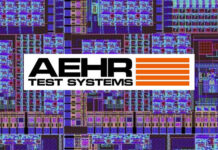CytomX Therapeutics Inc. (NASDAQ: CTMX) has announced interim results of the second phase study in patients with head and neck squamous cell carcinoma and in advanced squamous non-small cell lung cancer patients that received CX-2029, a CD71- targeted activated antibody-drug conjugate that the company is co-developing with AbbVie.
No safety signals were observed in the CX-2029 study
The company’s chairman and chief executive officer Sean McCarthy stated, “We are pleased to report these first results from the ongoing Phase 2 expansion study of CX-2029, a novel ADC developed with the CytomX Probody Therapeutic platform. We are encouraged that the response rate in heavily-pretreated and unselected sqNSCLC patients at this recent data cut off is trending with our stated target of 20% and enrollment in this tumor type continues towards our goal of 25 efficacy-evaluable patients. No new safety signals were observed and we are also encouraged by the low discontinuation rate due to adverse events. These preliminary results corroborate our previous Phase 1 observations and open a potential sqNSCLC commercial opportunity in the growing post-checkpoint inhibitor setting where there are limited treatment options.”
Expansion phase of CX-2029 to be complete in 2022
McCarthy concluded, “We continue to work closely with our partner, AbbVie, and look forward to completing the expansion phase of the CX-2029 development program and providing further data updates in 2022.”
Around 23 individuals with sqNSCLC and 29 patients with HNSCC had received a dose of CX-2029 at 3 mg/kg with 16 sqNSCLC patients, and 25 HNSCC patients had received one post-baseline evaluation that included per protocol, five patients (3 HSNCC and two sqNSCLC)recruited in the previously released Part B. The average period between follow-ups was 3.8 months. The clinical investigator’s objective response rate (ORR) was 18.8% in the 16 efficacy study participants with sqNSCLC, which included two confirmed partial responses (PRs) and an unconfirmed PR that was established seven days after the data cutoff. Notably, the two responses were ongoing, as the third took 5.6 months to finalize. In addition, the company reported a disease control rate (DCR) of 87.5 percent, comprising patients who had a complete response, partial response, or stable disease.
















